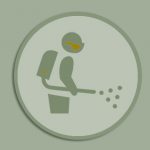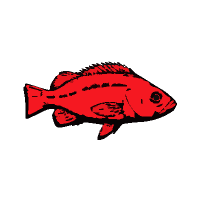Pesticides Court Ruling

A January 22, 2004 ruling by the United States District Court for the Western District of Washington, at Seattle, established rules for use of 54 pesticides near “salmon supporting waters” and cited information on the StreamNet web site as the definition of these waters for Oregon and Washington. Below you can find information related to locating such “salmon supporting waters” as defined by this 2004 court ruling.
More recent information on pesticide use limitations to protect endangered or threatened salmon and steelhead is provided by US Environmental Protection Agency (EPA) on their Salmon Mapper web page.
Background
As summarized by EPA on its webpage Endangered Species Case – Washington Toxics Coalition v. EPA
On January 30, 2001, the Washington Toxics Coalition et al. (WTC) filed suit against the EPA in the Western District of Washington, alleging that EPA had failed to consult with the NMFS on whether certain pesticides posed jeopardy to 26 federally listed endangered and threatened Pacific salmon and steelhead. On January 22, 2004, the District Court issued an Order granting interim injunctive relief to the WTC, et al., in response to the WTC’s July 16, 2003, motion for injunctive relief, pending EPA’s compliance with a schedule for review of these pesticides ordered earlier by the Court. The January 2004 Order:
Imposed no-use buffer zones around Salmon Supporting Waters (as defined by the Court) in Washington, Oregon and California where the court ordered that specific pesticides could not be used.
Required EPA to develop a point-of-sale notification that contains specified text and a prominent graphic for pesticides containing any of seven named active ingredients and used in Urban Areas (also defined by the Court). The seven pesticide active ingredients are: 2,4-D, carbaryl, diazinon, diuron, malathion, triclopyr BEE and trifluralin. The list of urban areas affected by this point-of-sale notification may be found in an attachment, Exhibit 3 on page 22 of the January 22, 2004 court order.
See also Bernstein et al. 2013, pg 57; and the January 22, 2004, Court Order.
The January 22, 2004 ruling by the United States District Court, Western District of Washington, at Seattle, established rules for use of pesticides near “Salmon Supporting Waters.” It cited information on the StreamNet web site as the definition of these waters for Oregon and Washington. (Further information is provided by the Washington State Department of Agriculture and the Oregon Department of Agriculture’s Pesticide Division.)
While the court cited StreamNet as the source of information on “Salmon Supporting Waters,” we do not have data specifically intended for that purpose. What we do have is information on salmon and steelhead distribution, broken down by life stage (i.e., spawning, rearing, migrating). This information indicates areas where salmon and steelhead occur for at least a portion of the year and what they are doing there. We presume these occupied streams would fit under any definition of “Salmon Supporting Waters” as intended by the court. This information is the best place to start to find waters that support salmon or steelhead, as described below.
Be aware that the information in the StreamNet database, while extensive, is not exhaustive. If a stream is included in the StreamNet anadromous fish distribution list, then that stream should be covered under the court’s definition. But just because a stream is not included does NOT necessarily mean that salmon and/or steelhead do not occur there. The primary reason this is so is that data in StreamNet cover mainly those streams contained on maps at the 1:100,000 scale. [As of July 2021 our distribution data are a mix of 100k and 24k+ (‘high-resolution’ NHD)]. However, we know that salmon and steelhead also occur in smaller streams that are not included in our salmon distribution data. These smaller streams can be quite valuable to salmon and steelhead. The Washington and Oregon fish and wildlife departments continue to work to develop fish distribution information at larger scales, and those data will be more inclusive. Even though that work is in progress and has not been completed, it might be useful to check to see what data are available at that larger scale. For Washington, contact Brodie Cox (Brodie.Cox@dfw.wa.gov). For Oregon, contact Jon Bowers (jon.k.bowers@odfw.oregon.gov).
Users of these data should also understand that it takes much more sampling to determine that a fish species does not occur at a site than to show that it does, but such higher levels of sampling effort have been done in few places. And, fish distribution can shrink in years of low population size or low water and expand in years of high populations or high water. A “Salmon Supporting Water” designation would presumably relate to a stream’s potential ability to support salmon, and not be diminished by a low population size or low water in some years. We recommend beginning with the mixed-scale StreamNet data and refining that information at the larger scale as a second step.
Finding Fish Distribution Data
To view salmon bearing-streams, use the StreamNet Mapper. Use the tools at the top of the screen to make map layers appear or disappear. You can select layers for multiple species at once, and find your area of interest to determine if your site contains any anadromous species (salmon or steelhead) and thus is subject to the court ruling. To zoom in use the +/- buttons. To move the map hold down the mouse button and drag.
To see where this court ruling applies, click on the “Layer List” button, then click “Fish Distribution – By Species”. Expand the Fish Distribution item and select all salmon species and steelhead. Zoom in or out and move the map to get to your area of interest. To see which species are at your site and the name of the stream at that site, click the stream and then page through the popup window that appears.
Alternative Approach
To assist people working with this court ruling, in 2004 we pre-sorted all streams in the StreamNet database that contain any of the listed species covered by the court order as of the date of the ruling and have placed them in an Excel spreadsheet. In addition to stream names, the spreadsheet lists the waters they are tributary to, helping to reduce confusion over streams with the same name. Information for each stream includes HUC4, county, and other criteria that may be helpful in sorting the information. While this spreadsheet accumulates a lot of information in one place and allows users to sort on several attributes, it does not include all of the qualifying information contained in the StreamNet database and it has not been updated since the original court ruling in 2004. Thus, the StreamNet Mapper approach discussed above should be considered the most detailed and current source of information for this purpose.
Obtain Information for Use in GIS
GIS data for use in geographic information systems (shapefiles, coverages) for fish distributions can be accessed from the GIS Data Sets page.
Conclusion
These instructions should help you navigate through the StreamNet data and locate waters that currently support salmon and steelhead. If additional questions arise, click the ‘Contact’ button at the bottom of any page to send us a message or question. Either way, StreamNet staff will be happy to answer questions, and we are usually able to respond within one business day.
References
- Bernstein, L, L. Arkin, and R. Lindberg. 2013. Oregon’s Industrial Forests and Herbicide Use: A Case Study of Risk to People, Drinking Water and Salmon. Beyond Toxics, Eugene, Oregon. https://www.beyondtoxics.org/wp-content/uploads/2013/12/FINAL_Report_OregonIndustrialForest_and_HerbicideUse_12-17-13.pdf
- United States District Court Western District of Washington at Seattle. Case No. C01-0132C Order. WTC et al. v. EPA. https://www.epa.gov/sites/production/files/2015-07/documents/1-04order.pdf

